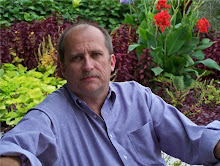
Back on the ground in the states, and it was a jarring landing. Not the airplane – that was great. I mean the realization that our security procedures in this country are way more intrusive and aggravating than they need to be.
Getting on the plane in Denmark, I passed through three security checkpoints and a passport control station, showing my passport at each spot. The metal detectors were easy. I had to take literally everything out of my pockets, but I got to keep my shoes on, and no one frisked me. The screeners were always very friendly and courteous.
I got to Atlanta, and U.S. Customs and Border Protection agents greeted me with smiles and a “welcome home” as I went through passport control. Agents at baggage claim and the agriculture check station were very courteous as their dogs sniffed my bags and they asked the required questions about food items, and my visit to a farm.
Then I got to the TSA. That was end of smiles and courtesy.
First, the woman at the x-ray machine snarled at me for not laying the paper bag with my duty-free items flat, and for putting my shoes in a basket rather than directly on the conveyor. Then I forgot to take my belt off before I went through the metal detector. I have only one thing to say to Mr. Sideburns-and-Beer-Gut manning that machine: Being a jerk doesn’t make my travel any safer. It just makes me write a hostile blog.
And it wasn’t just me. They were universally nasty to everyone who passed through.
I realize that we’ve been attacked here, and I realize that we need security. But how much is too much?
While in Denmark, I had the chance to visit two government offices – the Center for Green Transport and the Climate and Energy Ministry. At the Green Transport building, we had only to walk through open front door and up the stairs to a receptionist.
A minister is essentially like a cabinet secretary in the U.S., though Danish ministers also serve in Parliament. Going to Minister Connie Hedegaard’s office required no sniffing, no metal detector and no snarling security officers in paramilitary uniforms. We walked through a glass door by the receptionist, and were then shown upstairs to her office.
That same night, during Copenhagan’s annual Kulturnatten (Night of Culture), hundreds and possibly thousands of people wandered through Minister Hedegaard’s private office, shaking hands and making small talk with her. There was not even one guy in sunglasses, dark suit and ear piece. And Connie Hedegaard, as nearly as I can tell, is the Hillary Clinton of Denmark.
Just as refreshing was the trip to Amalienborg Palace, home of Queen Margrethe and the Royal Family. No gates, no fences, no concrete barriers. Cars drove through the palace courtyard unimpeded. The only guards in view were a handful of Royal Life Guards, one at each of several small guard stands along the outer walls of the courtyard. In their bearskin hats and 18th century-style uniforms, they stood in front of small guardhouses and stared straight ahead, making no move to stop, question or search tourists and citizens coming into the palace yard.
The White House, on the other hand, is surrounded by an iron fence, concrete barriers and a very conspicuous police and Secret Service presence. No one drives through the gate or walks through the gate without an invitation.
How did we get to this place in our country? Presidents used to let the masses into the White House on Inauguration Day, one even had his clothes stolen while skinny dipping alone in the Potomac River.
It’s a sad statement on the world climate that our president, an officer elected by the people, has become more secluded and more guarded than a European monarch.

No comments:
Post a Comment